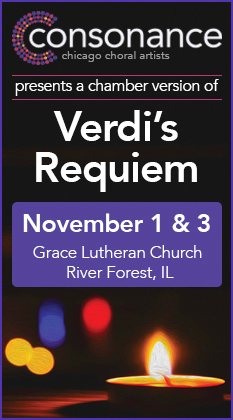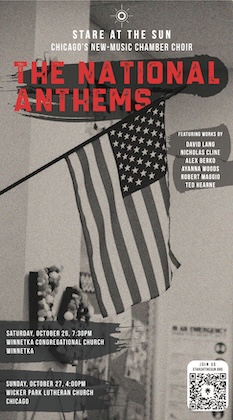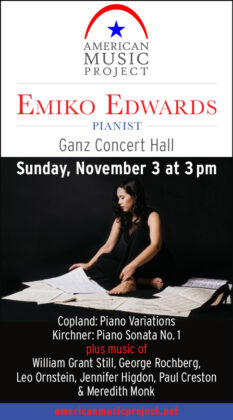Fulcrum Point serves up bracing night of diverse new music
There are two important elements the Fulcrum Point New Music Project nearly always gets right. First, the ensemble, founded in 1998 by trumpeter Stephen Burns, is constantly looking for interesting ways to expand its audience’s musical horizons. Second, its level of performance is impressively high. The end result? An ensemble that rarely wastes our time, and all but guarantees that listeners will walk out of a concert having learned something well worth knowing.
Fulcrum Point’s combination of innovative programming and crack musical chops was on full display Tuesday night at the Harris Theater in Millennium Park. The program’s name was unwieldy—“Heroes and Demons: Legends of Urban, Latin and Native America’’—but the mix of music was heady.
The concert opened and closed with world premieres—Wintu Dream Song, a lush, wistful work for flugelhorn and string quartet by American composer David Dzubay, and Urban Legends, an expert pairing of hip-hop lyrics with austere yet mellow chamber-ensemble accompaniment by New York-based composer Randall Woolf.
In between came Sulvasutra by Evan Ziporyn for string quartet, tabla (Indian hand drums) and pipa (a kind of Chinese lute); Dzubay’s Kukulkan II, composed in 2007, and Misplaced Flowers, a dance piece performed by seven members of the Luna Negra Dance Theater choreographed by Joel Valentin-Martinez. Hilda Paredes’ score for the piece, titled ”Ooxpeel ik’il t’aan, called for trumpet, flugelhorn, percussion and electronics. The instruments accompanied a taped reading of three poems in the Mayan language written and recited by poet Briceida Cuevas Cob.
The Fulcrum Point musicians were exceptionally evocative in both Dzubay works. Dzubay first composed Wintu Dream Songs, based on a Native American funeral song, as a choral piece and later used it in a string quartet. In his newest version, the velvety melodies from Burns’ flugelhorn lingered in the air, hovering like a benign spirit above the string quartet’s melancholy harmonies.
In Kukulkan II, a six-movement work inspired by Mayan ruins, Kathleen Brauer’s silvery, singing violin pulled away from her colleagues on flute, clarinet, cello and piano. Even at stratospheric heights, her tone was rich and strong, keening like a high-velocity wind. In the darting, frantic fifth movement, the musicians were hyper-alert to one another, tossing short phrases among themselves, driven by the urgent pulse of Kuang-Hao Huang’s piano.
The collaboration between Fulcrum Point’s string quartet and Yang Wei on pipa and Kalyan Pathak on tabla was equally tight in Ziporyn’s meditative Sulvasutra. Harris Theater’s clear acoustics allowed each instrument to blossom fully. The metallic twang of Wei’s pipa and the fleet thrum of Pathak’s tabla added edge and depth to the clearly etched string quartet.
In Misplaced Flowers, the Mayan-language poems erupted with sharp, staccato edges, resembling the sound of Chinese or Japanese. Punctuated by Burns’ flugelhorn and a variety of percussion instruments played by Jeff Handley and Brandon Podjasek, they were both mysterious and mesmerizing. Luna Negra dancers threw themselves into the dance’s deep, juicy lunges and stretched arabesques. But the piece seemed overly long and the choreography occasionally aimless.
Urban Legends was a revelation. The taped hip-hop lyrics were full of vibrant imagery and each word was clearly enunciated. Woolf’s sultry music, for ten wind and string players plus vibraphone, supported each text like a plushy, dark carpet. What could have been a gimmick was instead a deft, sophisticated blend of words and music.
Posted in Performances





Posted Mar 25, 2010 at 2:02 pm by R. Smith
You offer an exceptionally detailed and appropriate account of the musical diversity of the program, which as a program I found a bit disjointed but which made sense as individual experiences. I am less in agreement with your assessment of the dance piece. In some ways the length of the choreography is set or set-up by the musical piece itself. That is, much of the extended nature of the piece seemed to me to mark precisely the durational aspects of Paredez’s work (which at times seems to purposely delay or invest in the spaces between aural stimuli). This is an aspect that I thought the movement itself did beautifully. Contrasting the excess of jumps in the first movement with the sculptural slowness of the single dancer in the red fabric in the next one. The minuteness of the gesture, the play with hands and head turns, the detail of the flowers at the end seemed to me to evoke those small quotidian instances both the Mayan poet and the composer seemed to highlight in their work. The piece seemed to evoke an intimacy and attention that I felt lacking in the rest of the evening’s experience. This was a work that felt contemplative rather than aimless. It would be wonderful to hear you address movement in as sophisticated a fashion as you address dance.